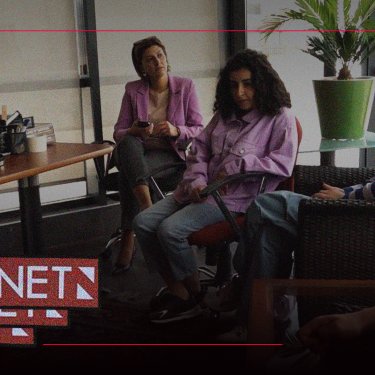RSF action plan for helping refugee journalists from Nagorno-Karabakh

Azerbaijan’s attack on Nagorno-Karabakh, a separatist enclave with an Armenian population, triggered a massive exodus by its residents, including many journalists. The Reporters Without Borders (RSF) crisis unit met with them in Yerevan, Armenia’s capital, and in Goris, in Syunik province, in order to offer psychological assistance, training and professional equipment.
In Yerevan, on the terrace of the offices of CivilNet, a leading independent Armenian media outlet and video platform, video reporter Siranush Adamyan described the nine months she spent working in Nagorno-Karabakh during Azerbaijan’s blockade – the hunger, the deprivations and the power cuts – and then Azerbaijan’s sudden attack on 19 September.
“When the village was being subjected to an artillery bombardment, I came out of the cellar to film for a few seconds, in order to provide proof in image and sound of what was happening,” she said. “I was very scared.” She went on to describe the forced departure and the long columns of cars on the Lachin Corridor road – the only way into Armenia from the enclave.
Siranush is 22 years old. She had just arrived in Yerevan, after a stopover in Goris. She worked as a journalist for the CivilNet bureau in Nagorno-Karabakh, where she was born. But she has had to leave her region – an Armenian secessionist enclave in the southwest of Azerbaijan, which regards it as an integral part of its territory.
This part of the country has seen a series of wars since the Soviet Union’s collapse in 1991. After a nine-month blockade beginning in December 2022, the Azerbaijani armed forces launched a lightning offensive on 19 September, causing a massive exodus of Armenian civilians from the enclave, including journalists.
RSF’s crisis unit visited Armenia from 30 September to 5 October to find out how many journalists have sought refuge there and to identify their needs. As well as Siranush, RSF met fellow CivilNet reporters Hasmik Kachatryan and Hayk Ghazaryan. All three were born and grew up in the enclave and, like the other Nagorno-Karabakh journalists RSF met, they are suffering from physical and psychological traumas and some lost loved ones. But the 40 or so refugee journalists tallied by RSF want to continue practicing their profession.
“The Nagorno-Karabakh journalists have suffered significant physical and psychological traumas, and will have to rebuild their lives. For RSF, it is important to be at their side, in order to hear them recount their experiences, and to prepare the assistance we will provide in the areas of medical attention, training and protection.
CivilNet editor Karen Harutyunyan said the journalists’ needs were significant and would intensify. “Some journalists who arrived from Karabakh will stay in Yerevan, but many will go to live in provincial towns and villages,” he said. “We lost equipment, we were forced to leave it behind. It must be replaced. The situation is uncertain, war could return, and our journalists must be trained and protected. The media have a very important role to play in monitoring political decision-makers and institutions in an environment where corruption is endemic.”
To meet all these challenges, RSF is working with the Freedom of Information Centre of Armenia (FOICA) and is being assisted by leading media outlets at the forefront of the fight for journalistic freedom and independence, including CivilNet and EVN Report.
RSF and its partners plan to remain at the side of the refugee journalists from Nagorno-Karabakh in order to:
- provide the psychological support they need;
- replace lost and damaged professional equipment;
- help to build their capacities and train them in reporting in conflict zones and in first aid;
- provide them with protective vests and helmets, as well as first aid kits.
